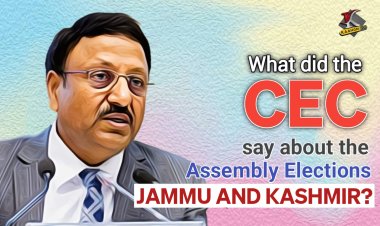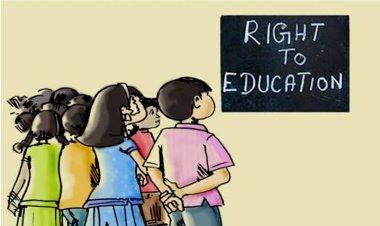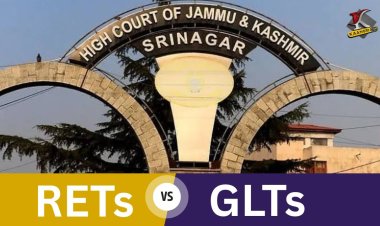Educated but Unemployed: The Silent Crisis After SAC 2018 in J&K
The SAC 2018 decision in Jammu & Kashmir secured jobs for existing SSA teachers but unintentionally blocked fresh recruitment, leaving thousands of qualified youth unemployed.

By Ayaz Mughal
In 2018, the State Administrative Council (SAC) in J&K made a major decision that significantly changed the education system in the state. This decision aimed to help thousands of teachers working under the Sarva Shiksha Abhiyan (SSA) scheme. This decision was made at a time when there was no elected government in the region. Instead, it was taken under the leadership of then-Governor Satyapal Malik, who was in charge of the administration. While the decision aimed to solve long-standing problems faced by teachers working under the Sarva Shiksha Abhiyan (SSA) scheme, it also led to some serious challenges for thousands of aspiring teachers across the state.
These teachers had been working on temporary contracts for years, often facing delays in salaries and lack of job security. To address these issues, SAC decided to make their jobs permanent. They did this by converting 28,363 General Line Teacher (GLT) vacancies into permanent Grade-II posts, allowing SSA teachers to be regularized from September 2018. This allowed the government to absorb existing SSA teachers into the formal system, finally giving them the security and recognition they had been waiting for.
For these in-service teachers, it was a moment of great relief and joy. They started receiving better salaries as per the 7th Pay Commission, along with other benefits like health insurance and pension eligibility. Most importantly, they gained the job stability that had been missing from their professional lives. The move brought respect and dignity to their roles as teachers and ensured they were treated at par with other regular government employees.
This move brought many benefits for the SSA teachers. They started receiving better salaries as per the 7th Pay Commission and finally got the job security they had been waiting for. It was a big relief for them and brought respect and stability to their profession. However, the decision also had some negative effects that were not initially expected. Since all the available teacher posts were used to regularize SSA teachers, there were no new vacancies left for fresh recruitment. As a result, thousands of educated youth and recent graduates found it difficult to get government teaching jobs. This situation is expected to continue for 10 to 15 years, creating frustration among job seekers who had hoped to start their careers in the education sector.
The freeze on hiring has resulted in a pronounced shortage of teaching staff across government schools in Jammu & Kashmir. Education Minister Sakina Itoo acknowledged this issue, stating that the shortage is mainly due to the non-recruitment of teachers since 2019, following the SAC's decision to utilize GLT vacancies for the absorption of regularized Rehbar-e-Taleem (RReT) teachers. She emphasized that the department is striving to mitigate the situation through staff rationalization and promotions to maintain an appropriate pupil-teacher ratio
The impact of this staffing shortfall is evident at various educational levels. Approximately 77.2% of upper primary schools lack sufficient subject-specific teachers, hindering the delivery of specialized education. At the secondary level, only 46.5% of schools have teachers available for all core subjects, leaving over half without comprehensive subject coverage.
Compounding the issue, more than 8,300 vacancies for Masters, Headmasters, Lecturers, and Principals remain unfilled across the state. The absence of new recruitments over the past five years has left thousands of qualified, unemployed youth in distress. The government has attempted to address these gaps by merging or closing over 4,300 schools under a rationalization scheme, but challenges persist.
The shortage is particularly acute in rural and remote areas, where many schools operate with just one teacher responsible for multiple grades and subjects. Official data reveals that 1,330 schools are functioning with a single teacher, affecting over 31,000 students and compromising the quality of education.
In Jammu & Kashmir, government teaching jobs have always been seen as a symbol of stability and respect. For many families, it is a way to improve their economic condition and secure a better future. But with no new vacancies available, the hopes of many educated youth have been crushed. This has become a serious concern, as it has led to growing frustration and disappointment among job seekers who now feel ignored and left behind.
The impact of this decision is not limited to individuals. It also affects the overall education system and the community. By not bringing in new teachers, the system misses out on young talent, innovative ideas, and fresh teaching methods. This could result in stagnation in classrooms and affect the quality of education over time. Furthermore, there is a risk that the growing number of unemployed educated youth may lead to social unrest or force many to migrate in search of jobs outside the region.
It is also important to remember the context in which this decision was taken. The SAC 2018 order was passed during Governor's Rule, when there was no elected government in place, and decisions were made without the involvement of public representatives. Now, the political scenario has changed, and an elected government is once again in place. The youth of Jammu & Kashmir have now fixed their eyes on leaders like Omar Abdullah, expecting them to review past decisions that have had long-term consequences.
If Omar Abdullah and other political leaders feel that the SAC 2018 decision, though well-intentioned, was unfair to the educated youth, they have a responsibility to take corrective measures. The new government must show the courage to admit if an imbalance was created and work toward remedial actions that ensure justice for all sections of society.
There are several ways this situation could be addressed. One solution could be creating supernumerary posts, which would allow new recruitment without disturbing the regularized positions of existing teachers. Another option could be phased recruitment, where new job openings are slowly introduced over the next few years to balance both past and future needs. Such strategies can help maintain fairness while ensuring that the education sector continues to grow and evolve.
_______
✍️ The Author can be reached at editorkaangri@gmail.com and WhatsApp: 9858460733









